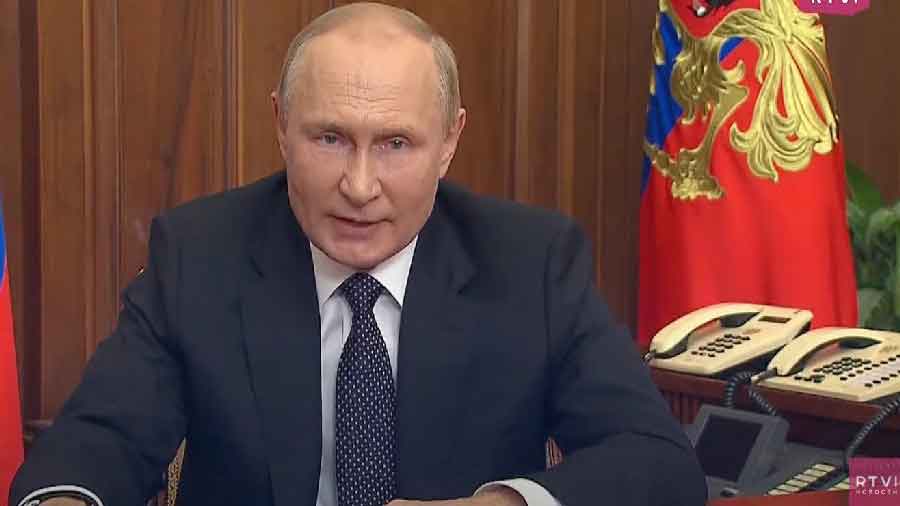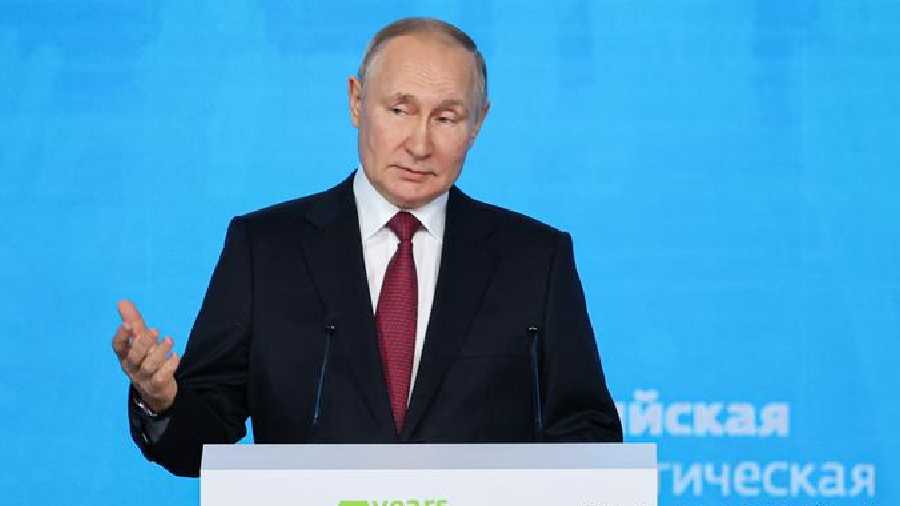A team of New York Times reporters investigated one of the central questions of the war in Ukraine: Why has Russia bungled its invasion so badly?
The story — based on secret battle plans, intercepts and interviews with Russian soldiers and Kremlin confidants — offers new insights into President Vladimir V. Putin’s state of mind, the stunning failures of his military, and US efforts to prevent a direct war with Russia.
ADVERTISEMENT
Here are eight takeaways from the report.
- Reached by phone inside Russian hospitals, wounded soldiers described being sent to war with little food, training, bullets or equipment — and watching about two-thirds of their platoon get killed. Materials recovered from battlefields point to the military’s lack of preparation: a map from the 1960s, a Wikipedia printout on how to operate a sniper rifle, a wildly optimistic timetable for Russia’s invasion. In interviews, one soldier recalled asking how to use his rifle just before heading off to battle, while another described how his supervisor revealed they were going to war: “Tomorrow you are going to Ukraine to f**** up some s***.”
- Many of the people closest to Putin fed his suspicions, magnifying his grievances against the West. A former confidant compared the dynamic to the radicalisation spiral of a social media algorithm: “They read his mood and they start to slip him that kind of stuff.” Putin planned the invasion in such secrecy that even Dmitri S. Peskov, his spokesman, said in an interview that he learned of it only once it had begun. Anton Vaino, Putin’s chief of staff, and Aleksei Gromov, Putin’s powerful media adviser, also said they did not know in advance, according to people who spoke to them about it.
- The US tried to stop Ukraine from killing a top Russian general. American officials found out that Gen. Valery Gerasimov was planning a trip to the front lines, but withheld the information from the Ukrainians, worried that an attempt on his life could lead to a war between the US and Russia. The Ukrainians learned of the trip anyway. After an internal debate, Washington took the extraordinary step of asking Ukraine to call off an attack — only to be told that the Ukrainians had already launched it. Dozens of Russian soldiers were said to have been killed. General Gerasimov wasn’t one of them.
- A senior Russian official told the CIA director, William J. Burns, last month that Russia would not give up, no matter how many of its soldiers were killed or injured. One Nato member is warning allies that Putin might accept the death or injury of as many as 300,000 Russian troops — roughly three times his estimated losses so far. Before the war, when Burns warned Russia not to invade Ukraine, another senior Russian official said Russia’s military was strong enough to stand up even to the Americans.
- Days into the invasion, Putin told Israel’s leader that the Ukrainians had turned out to be “tougher than I was told”. But, he warned the leader, Prime Minister Naftali Bennett, “we are a big country and we have patience”. Earlier, in October 2021, during his first meeting with Bennett, Putin had railed against President Volodymyr Zelensky of Ukraine: “What kind of Jew is he? He’s an enabler of Nazism.”
- Invading Russian soldiers used their cellphones to call home, enabling the Ukrainian military to find and kill them. Phone intercepts obtained by The Times showed the bitterness Russian soldiers felt toward their own commanders. “They’re preparing you to be cannon fodder,” one soldier said. Another described a commander warning him he could be prosecuted for leaving his position, only for the commander to flee when shelling began. “His wheels didn’t even get stuck in the mud,” the soldier said.
- The day of the invasion, Putin set a trap for Russian business tycoons, putting them on television “to tar everyone there”, as one of them described it. Indeed, the businessmen present were all hit by western sanctions in the months that followed. Even so, another billionaire at the Kremlin that day, Andrey Melnichenko, was defiant, insisting sanctions would not make Russian tycoons turn against Putin. “In textbooks, they call this political terrorism,” he said.
- Putin’s fractured armies have sometimes turned on each other; one soldier said a tank commander deliberately fired on a Russian checkpoint. Putin divided his forces into fiefs, some led by people who are not even part of the military, such as his former bodyguard, the leader of Chechnya and a mercenary boss who has provided catering for Kremlin events, Yevgeny Prigozhin. In an interview after being captured by Ukraine, one Russian soldier said he had been in prison for murder when Prigozhin recruited him. Later, after he was returned to Russia in a prisoner swap, a video emerged of his execution by sledgehammer.
(New York Times News Service)
Also Read











